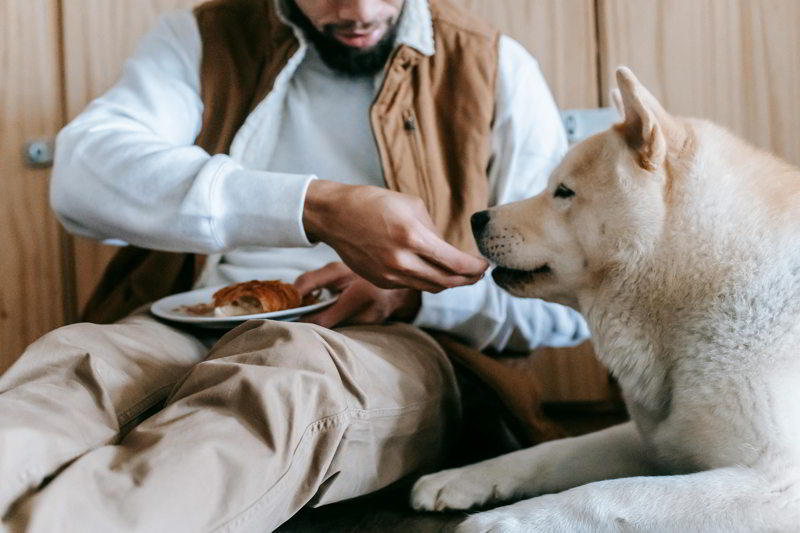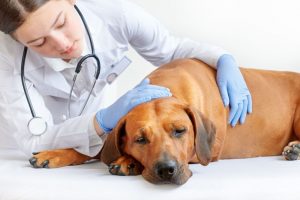When your pet isn’t eating in the way you’d expect them to, you can start to worry about all aspects of their health and physical wellbeing. Being concerned about your dog or cat’s eating habits is completely normal and many loving pet owners experience the same feelings at some point. The most important thing to remember is to stay calm and take advice from people you trust. Whether you’re seeking out help from a local animal care provider, or you’re turning to the online space for more support you can find more information on how to help your dog in many different places. You spend so much of your time making sure they’re well-groomed, tick-free and exercised, but what do you do when their food scheduling is all off kilter? Here are a handful of methods that may help you to improve your pet’s eating habits in the most supportive way possible.
Spot The Tell Tale Signs
You know your pet better than anyone, so you will probably notice the signs right away. Being fussy around their food can be a short-lived phase or it can go on for a prolonged period of time. If you think it’s time to intervene then listen to your gut; your pet may be sick and in need of medical attention sooner rather than later. Monitor their eating habits so that you can provide as much information to your vet as possible.
Get a Pet Sensitivity Test
Your pet may be reacting adversely to food because it makes them feel a certain type of way. They may suddenly develop an aversion to their usual meals because of stomach issues, or sensitivities. The only way you can truly find out what’s going on with your pet is to consult My Pet Sensitivity for more information. Once you have done a simple test on your pet, you’ll receive your results within five days and you’ll learn more about what they should and shouldn’t be eating. Switching their diet and trying completely new foods may transform their eating habits in a positive way so that their meals are much more digestible for them. You may need to try dry foods instead of wet foods, or vice versa in order to see a real difference in your pet’s eating habits.
Check for Other Illnesses or Ailments
The food itself may not be the actual problem for your pet, so you may want to get them checked over for any other illnesses or ailments before you make any dietary changes. Getting your dog checked over by their vet will help to rule out issues with their teeth, medication issues or any other illnesses they’re struggling with.
Improve Other Aspects of Their Daily Routine
Making sure your dog gets enough exercise and has enough stimulation throughout the day is very important. Not getting enough movement can affect their diet and cause them to eat less or go off their food altogether. A healthy and happy dog should be ready for every meal time if they’ve had enough exercise and fun during the daytime..
Understand the Mindset of Your Dog
Your cat or dog has probably developed fussy eating over a period of time, rather than being born with it. This means that they’re actually incredibly smart, because they’re being given foods that go above and beyond their average meals, simply because you want them to eat something. They may understand that they get more attention if they don’t eat their dinner, or they may even receive a tastier option if they push their food aside. It’s time to pick up on these cues and start to delve deeper into the mindset of your dog so that you can help them move past their eating issues.
Improve Your Dog’s Relationship With Food
Recognizing your pet’s behaviour around food can help you to find the best possible way to help your dog. Improvements will only start to happen once you can see and solve what’s causing these strange habits around their eating schedules. This may mean keeping a diary, taking videos of repetitive behaviours or writing down the foods they do accept at any given time. Noticing trends and patterns will help you to find a common denominator so that you can gradually improve your dog’s relationship with food over time.
Try to Reduce Snacking When Possible
Giving your dog or cat a fun treat or snack is what having a pet is all about, but it’s important to keep snacking to a minimum when they’re struggling with food issues. Reducing snacking will help them to realize their hunger triggers so that they actually want to eat the meals they are presented with.
Take a Look at Their Feeding Environment
Have a look at where your pet normally eats and whether it’s a comfortable environment for their mealtimes. Some pets can be sensitive to certain types of bowls such as metal, plastic or glass. Whereas others can be wary when they can see their own reflection in a window or mirror. Ensure their bowl is clean and they’re able to concentrate whilst enjoying their food.
Stick to Consistent Routines and Habits
Much like children and adult humans, we thrive on routine and structure when it comes to eating. If you’ve ever been traveling and experienced jet lag, you’ll know how tricky it can be to get back in the swing of things with your eating habits. Getting your dog into a healthy routine is so important if you want them to settle into a balanced diet and improve their nutrient intake. Try to offer them food at the same time each day so that they know when to predict their next meal.
To Conclude
It’s clear to see that having a fussy pet can be extremely challenging to work with. You will always want what’s best for your loving dog or cat, but you may find some moments incredibly difficult. It’s important to persevere with the methods you have chosen so that they can start to learn positive behaviours around good. Whether you’re providing them with an abundance of praise, getting an intolerance test, limiting their snacks or sticking with a consistent eating routine, you may soon have a pet that loves their mealtimes again in no time!






